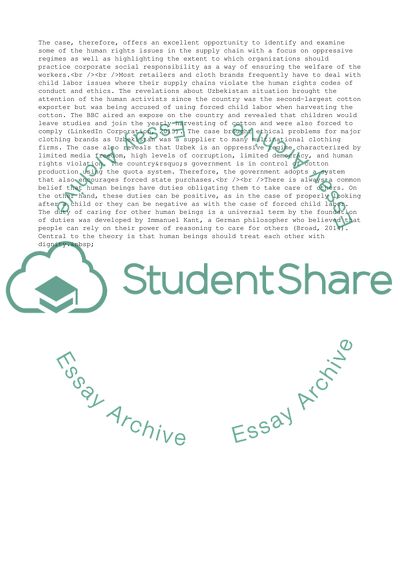Cite this document
(Uzbek Cotton: A New Spin on Child Labour in the Clothing Industry Case Study Example | Topics and Well Written Essays - 1750 words, n.d.)
Uzbek Cotton: A New Spin on Child Labour in the Clothing Industry Case Study Example | Topics and Well Written Essays - 1750 words. https://studentshare.org/business/1866858-business-ethics-uzbek-cotton-a-new-spin-on-child-labour-in-the-clothing-industry
Uzbek Cotton: A New Spin on Child Labour in the Clothing Industry Case Study Example | Topics and Well Written Essays - 1750 words. https://studentshare.org/business/1866858-business-ethics-uzbek-cotton-a-new-spin-on-child-labour-in-the-clothing-industry
(Uzbek Cotton: A New Spin on Child Labour in the Clothing Industry Case Study Example | Topics and Well Written Essays - 1750 Words)
Uzbek Cotton: A New Spin on Child Labour in the Clothing Industry Case Study Example | Topics and Well Written Essays - 1750 Words. https://studentshare.org/business/1866858-business-ethics-uzbek-cotton-a-new-spin-on-child-labour-in-the-clothing-industry.
Uzbek Cotton: A New Spin on Child Labour in the Clothing Industry Case Study Example | Topics and Well Written Essays - 1750 Words. https://studentshare.org/business/1866858-business-ethics-uzbek-cotton-a-new-spin-on-child-labour-in-the-clothing-industry.
“Uzbek Cotton: A New Spin on Child Labour in the Clothing Industry Case Study Example | Topics and Well Written Essays - 1750 Words”. https://studentshare.org/business/1866858-business-ethics-uzbek-cotton-a-new-spin-on-child-labour-in-the-clothing-industry.


